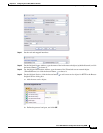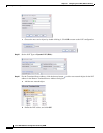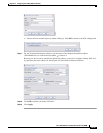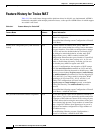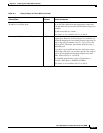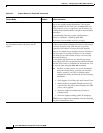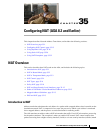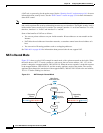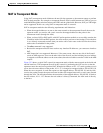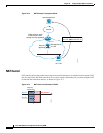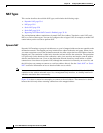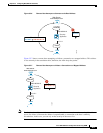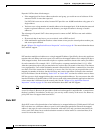
CHAPTER
35-1
Cisco ASA 5500 Series Configuration Guide using ASDM
35
Configuring NAT (ASA 8.2 and Earlier)
This chapter describes Network Address Translation, and includes the following sections:
• NAT Overview, page 35-1
• Configuring NAT Control, page 35-15
• Using Dynamic NAT, page 35-16
• Using Static NAT, page 35-26
• Using NAT Exemption, page 35-32
NAT Overview
This section describes how NAT works on the ASA, and includes the following topics:
• Introduction to NAT, page 35-1
• NAT in Routed Mode, page 35-2
• NAT in Transparent Mode, page 35-3
• NAT Control, page 35-4
• NAT Types, page 35-6
• Policy NAT, page 35-10
• NAT and Same Security Level Interfaces, page 35-12
• Order of NAT Rules Used to Match Real Addresses, page 35-13
• Mapped Address Guidelines, page 35-13
• DNS and NAT, page 35-13
Introduction to NAT
Address translation substitutes the real address in a packet with a mapped address that is routable on the
destination network. NAT is composed of two steps: the process by which a real address is translated
into a mapped address, and the process to undo translation for returning traffic.
The ASA translates an address when a NAT rule matches the traffic. If no NAT rule matches, processing
for the packet continues. The exception is when you enable NAT control. NAT control requires that
packets traversing from a higher security interface (inside) to a lower security interface (outside) match



